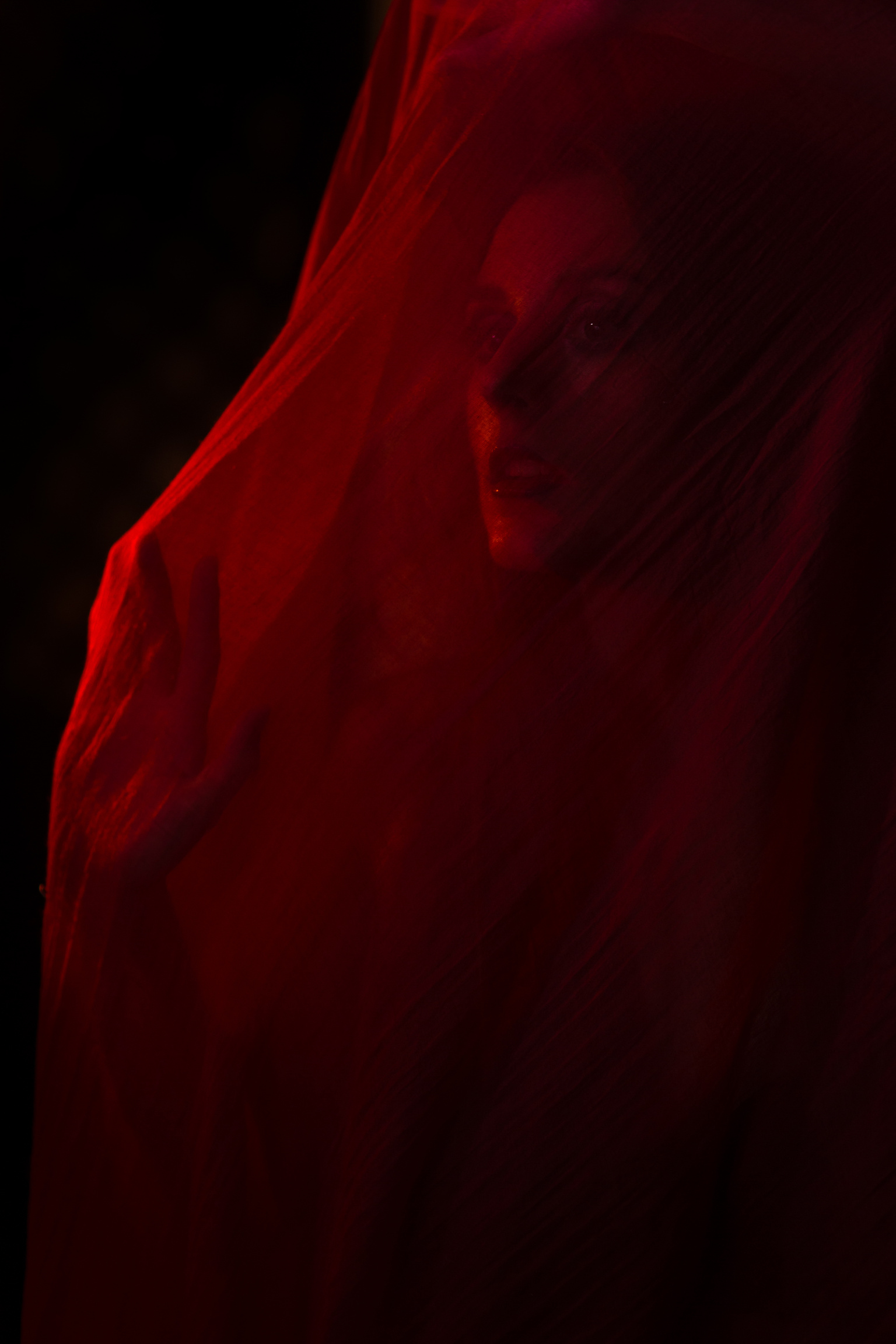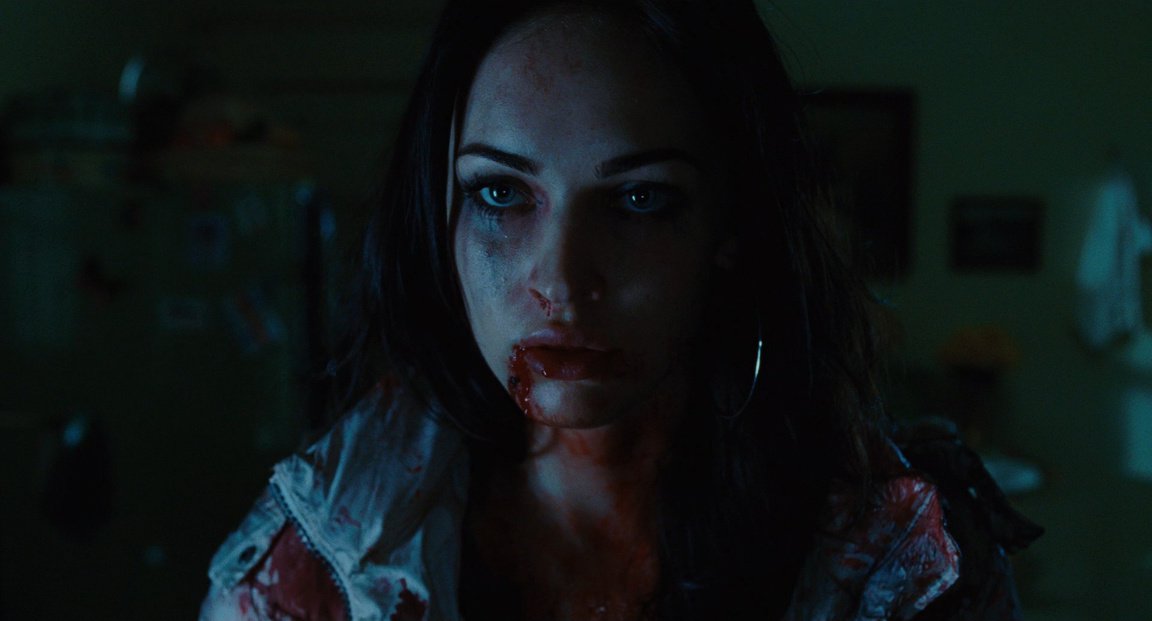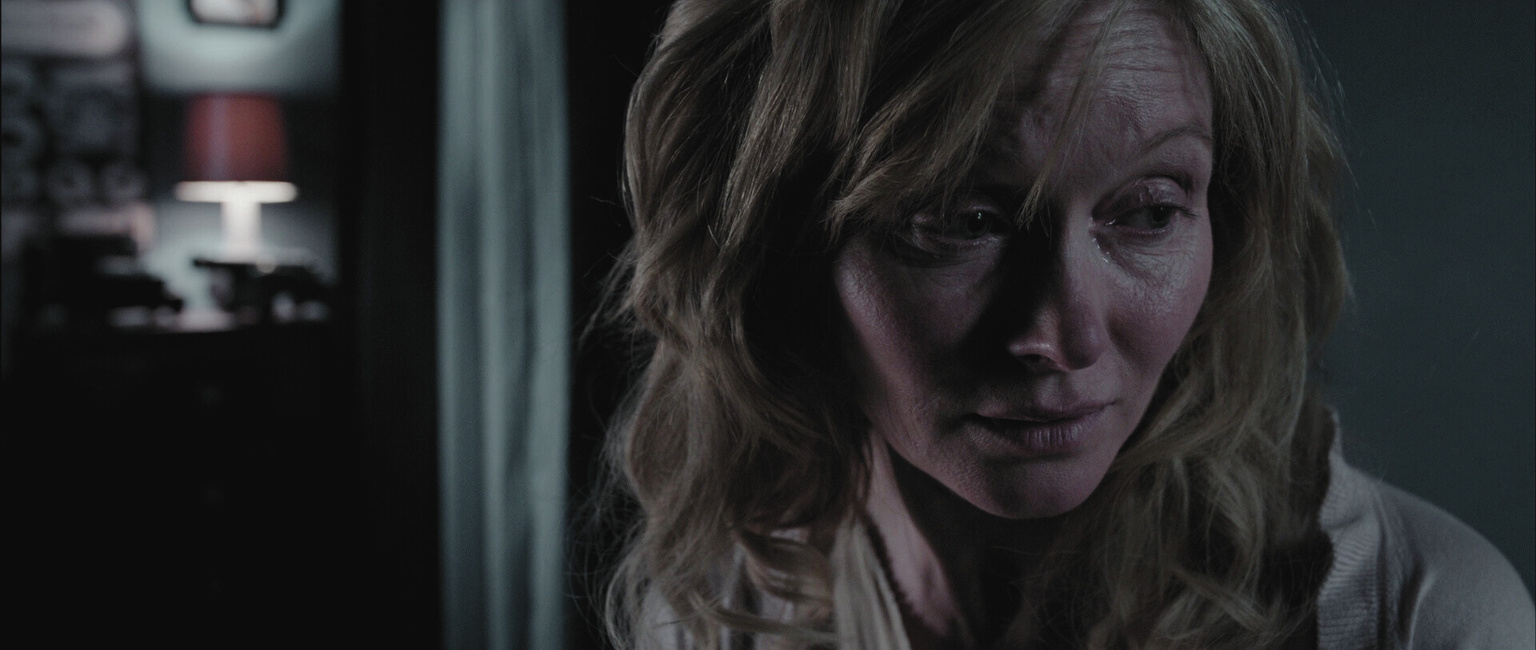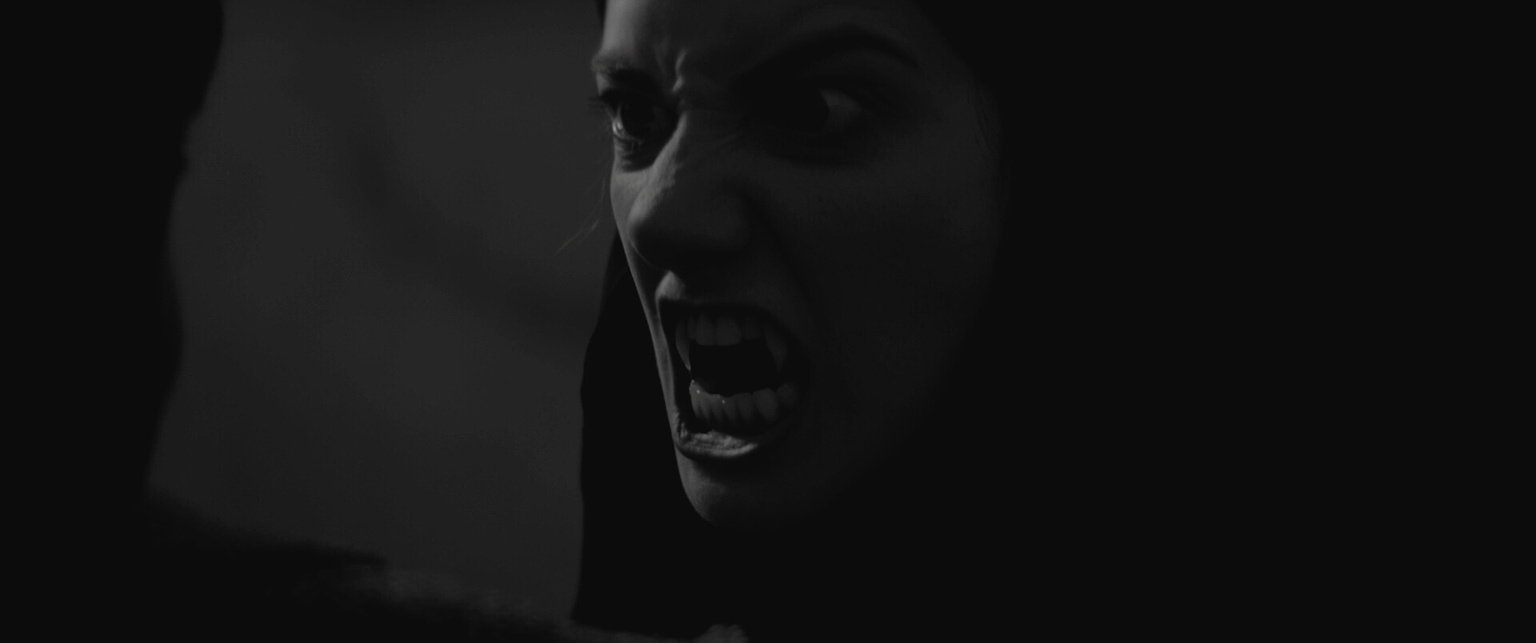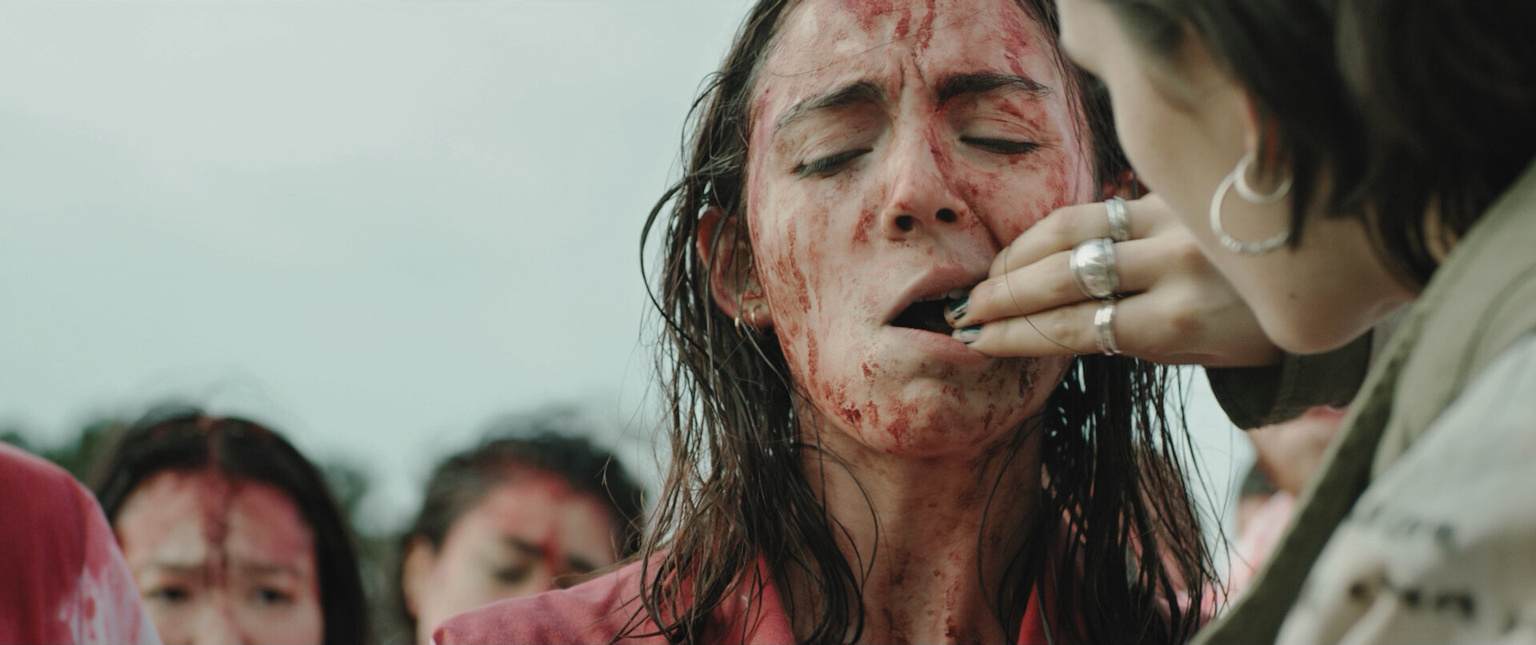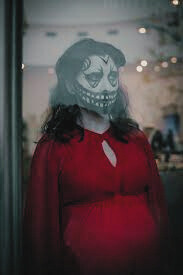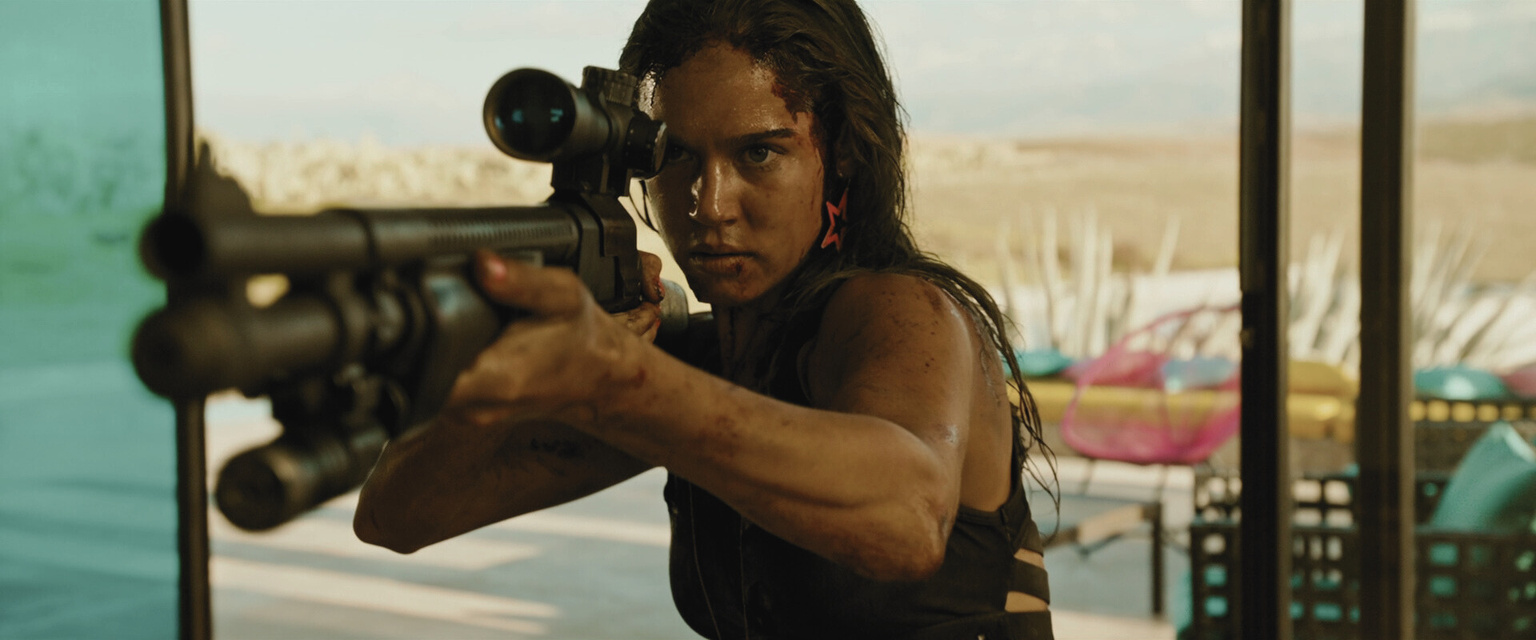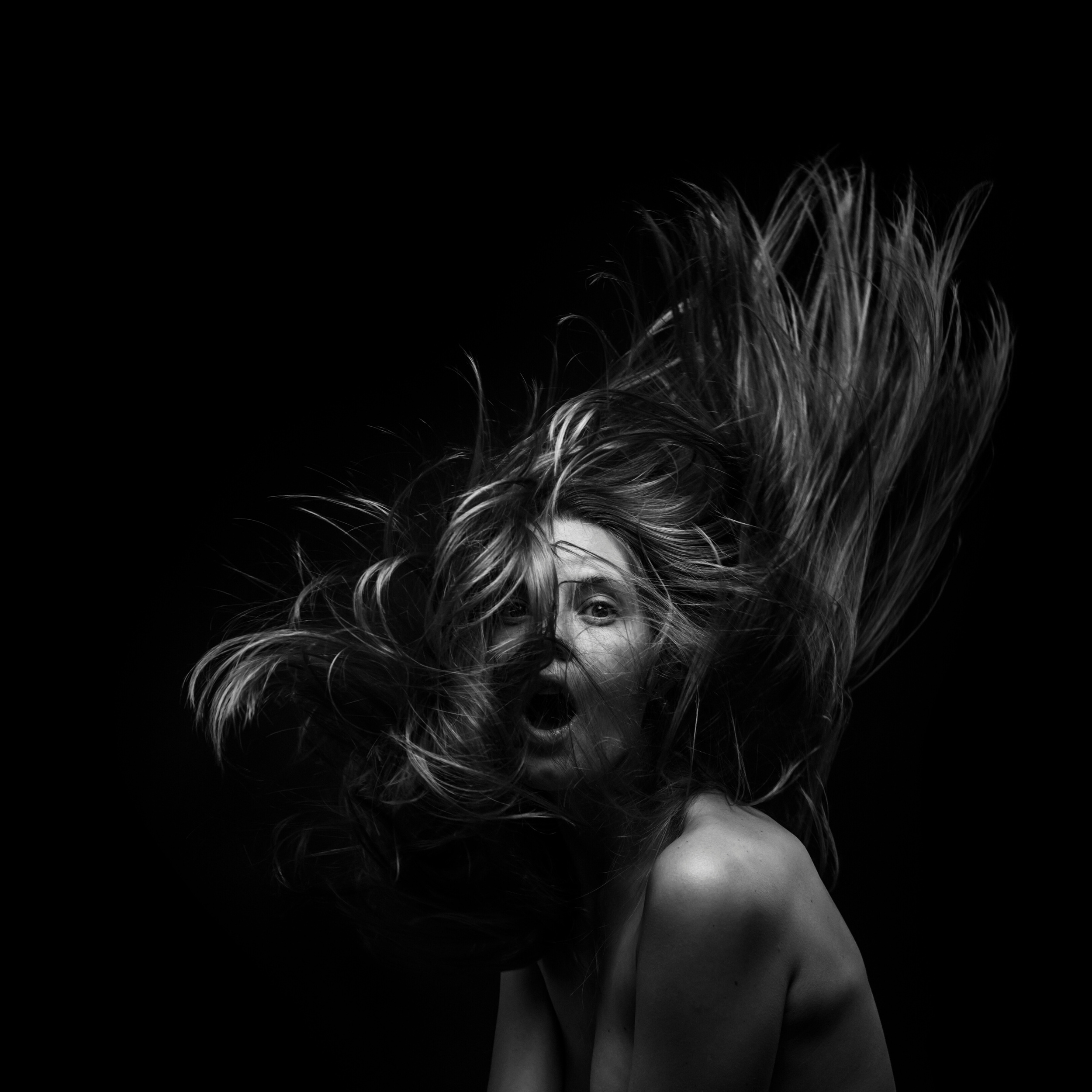
she Screams
FEMALE VOICES IN 21ST CENTURY HORROR CINEMA
A curated online film exhibition by TAYLOR BUORO.
enter at your own risk
This exhibition references;
- Torture
- Rape/Sexual Assault
- Cannibalism
- Extreme Violence
- Self Mutilation
- Pregnancy
- Body Horror
- Death
- Paranormal entities
Welcome to She Screams: Female Voices in Horror Cinema, an online film exhibition that delves into the rich and empowering world of horror through the lens of six talented 21st century female filmmakers. In this exhibition, we aim to explore the profound impact of women directors on the horror genre and the evolution of female protagonists in a realm often dominated by male-driven narratives. She Screams is an ode to the visionary women rewriting the narrative of fear in the 21st century.
The representation of women both in front and behind the camera has been an area of concern throughout cinematic history. In 2022, only three of the top 25 grossing horror films were directed by women, The Invitation by Jessica Thompson, Umma by Iris Shim and Bodies, Bodies, Bodies by Halina Reijn (The Numbers, 2022). This underrepresentation is particularly concerning in the horror genre given its deep-rooted misogyny and propensity for male dominated narratives where women are objected to sexualisation and extreme violence. Thus, solidifying the need to celebrate female filmmakers within the horror genre who portray women as more than mere objects of fear or desire. This is widely acknowledged and supported by feminist film theorists, such as Barbara Creed (1993) and Carol Clover (1992) and is a key factor for the development of this online exhibition.
The horror genre, in its cinematic form, operates as a visually engaging representation of not only individual fears but also collective anxieties and sociocultural concerns (Evernden, 2019). The dark, high-stakes narrative synonymous with the horror genre provides a unique vantage point with which to dissect and understand societal fears regarding gender, ethnicity, class, romance, and violence (Mintz & Roberts, 1993). Historically a male-dominated industry this brings into question the representation of women and the plight of the female filmmaker within the horror genre. Through the lens of horror cinema, feminist theorists such as Carol J. Clover and Barbara Creed engage with the multifaceted nature of gender and offer a platform for critical analysis, deconstruction, and reinterpretation. In the 21st century female filmmakers have emerged as a driving force in the evolution of the horror genre, unearthing fresh and compelling narratives that speak directly to the female experience. Given the success of filmmakers such as Jennifer Kent, Ana Lily Amirpour, Karyn Kusama and Julie Ducournau it is evident that women have finally found their voice within a genre historically steeped in misogyny and dominated by men.
Curator Statement
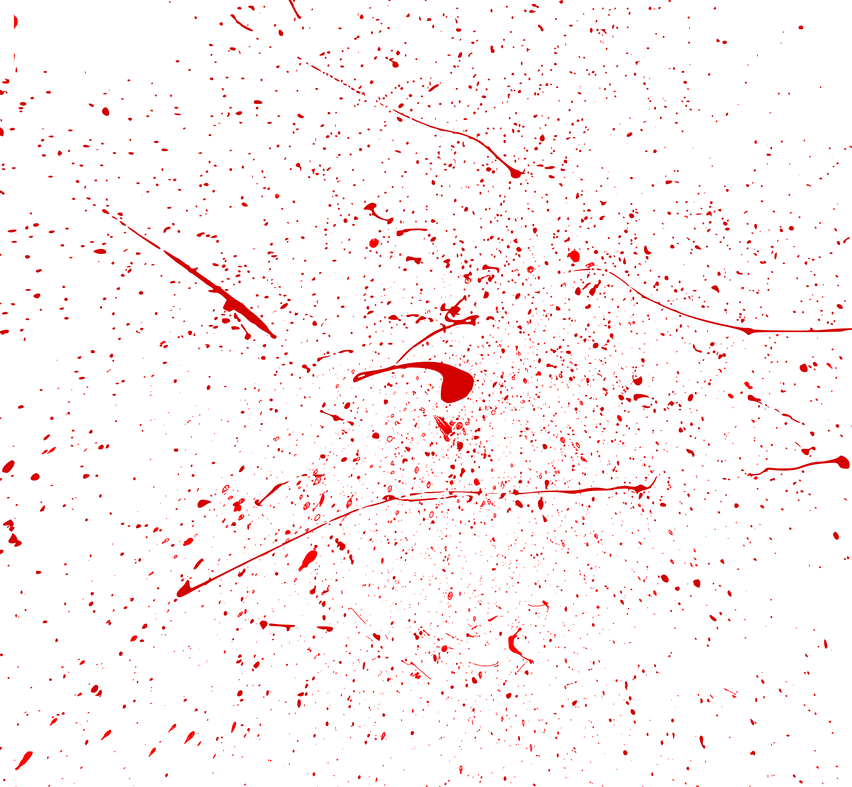
The domination of men in cinema and the dismissal of women as a projection of male fantasy was explored in Laura Mulvey’s (1975) concept of the ‘male gaze’. She has since made significant contributions to outlining the historical objectification and eroticisation of female characters in cinema. Almwaka (2022) notes the tendency for horror films to support these traditionally voyeuristic tendencies and patriarchal dominance over a women’s sexuality. Comments made by prominent male directors reveal this historical proclivity for female objectivation within the horror genre. Alfred Hitchcock delivered the concerning opinion that the trouble with the cinema of the time was due to not torturing women enough while director Dario Argento admits that that he ‘like[s] women, especially beautiful ones. If they have a good face and figure. I would much prefer to watch them being murdered than an ugly girl or man” (O’Brien, 2019). Additional evidence is clear where the roles of female writers, such as Debra Hill’s contribution to the Halloween franchise from 1978 to 1982 and Daria Nicolodi’s work on Suspiria (1977), are significantly minimised if not actively omitted from discussions and accolades for their respective films. According to Kenny (2023) both women have since left the feature film industry further highlighting the need to support female filmmakers in this genre.
The assumption that women do not watch or make horror films was evidenced more recently in the 2018 comments made by Jason Blum of Blumhouse Productions when he claimed the lack of female directors within his studio were due to low number of female directors in general and “even less who are inclined to do horror” (Daniels, 2021). Given the immediate backlash and inundation of suggestions of successful female directors within the horror cinematic field it is abundantly clear that this misconception is unfounded. This historical perception that women aren’t interested in the horror film genre was explored by feminist theorist Carol J. Clover (1992) and her concept of the ‘Final Girl’. Clover defines the ‘Final Girl’ as the last surviving female character in a horror film. While this representation of female resilience and strength can be empowering it can also perpetuate the notion of women as victims who develop strength through suffering. Clover’s work highlights the complexity of gender roles and the potential for female directors to introduce nuanced and authentic representation of women in horror narratives.
Schubart (2018) notes Clover’s work and that of prominent feminist film theorist Barbara Creed suggest the horror genre is historically reflective of sadomasochistic fears and illusions regarding women. Creed’s examination of the “monstrous-feminine” (1993) in horror films explores the potential for the recognition of social anxieties regarding female bodies, sexuality, and reproductive power. Female horror filmmakers as those explored in this exhibition provide unique perspectives within their films that delve into fears and anxieties without relying on exploitation. This deeper exploration of female-centric themes such as motherhood, puberty and adolescence grounded in their own experiences challenge the traditional narratives that have perpetuated female stereotypes. While it is undeniable male directors such as Ari Aster and his films Hereditary (2018) and Midsommar (2019) have also successfully crafted film narratives reflective of the female experience the female filmmaker’s interpretation provides a distinct perspective. This exhibition showcases the subversion of horror tropes and is a powerful testament to the innovation of female filmmakers in 21st century horror.
The inclusion of female filmmakers within the horror cinematic genre accommodates for unique and nuanced representation of women. Their experience as a women enrich horror narratives and challenge the historical dominance of the male gaze and traditional narratives that exploit and objectify women. This accommodates the evolution of the horror genre and its transcendence from historical limitations that were deeply rooted in misogyny. This exhibition is a testament to the power of notable 21st century female filmmakers and their ability to subvert horror tropes. This showcases the potential for the horror cinematic genre to mirror and dissect societal and cultural concerns of the zeitgeist.
Programmer Notes
She Screams: Female Voices in 21st Century Horror is an exploration of female filmmakers within the horror film genre and their potential to subvert and authenticate female centric themes with their own experiences. Further consideration in the selection of these six filmmakers and their works were those working within historically male-dominated sub-genres and their reinterpretation through a feminist lens. As such, the chosen films are representative of a diverse spectrum of female protagonists and horror sub-genres. Additional factors for the selection were in the substantial international reach the films had and their positive reception as deemed by film critics and rating platforms such as Rotten Tomatoes.
Julie Ducournau’s Raw (2016) and Karyn Kusama’s Jennifer’s Body (2009) both explore adolescence, the female body and complex relationships through the cannibal and paranormal horror subgenre respectively. Jennifer Kent’s The Babadook (2014) and Alice Lowe’s Prevenge (2016) subvert the monstrous mother trope while supporting Jane M. Ussher’s (2006) work on the destigmatising of women’s mental health within the horror genre. Ana Lily Amirpour’s A Girl Walks Home Alone at Night (2014) is representative of a denial for female objectification within the monster horror sub-genre. This is further evidenced in Coralie Fargeat’s Revenge (2017) and the subversion of the rape-revenge sub-genre as referred to by Carol J. Clover (1992).
The selected films effectively empower their female protagonists and offer representation of women who defy expectations and take control of their narrative.

feminism & the horror film
THE COLLECTION
She Screams brings together six female filmmakers taking male-dominated horror subgenres and reinterpreting them through a feminist lens.

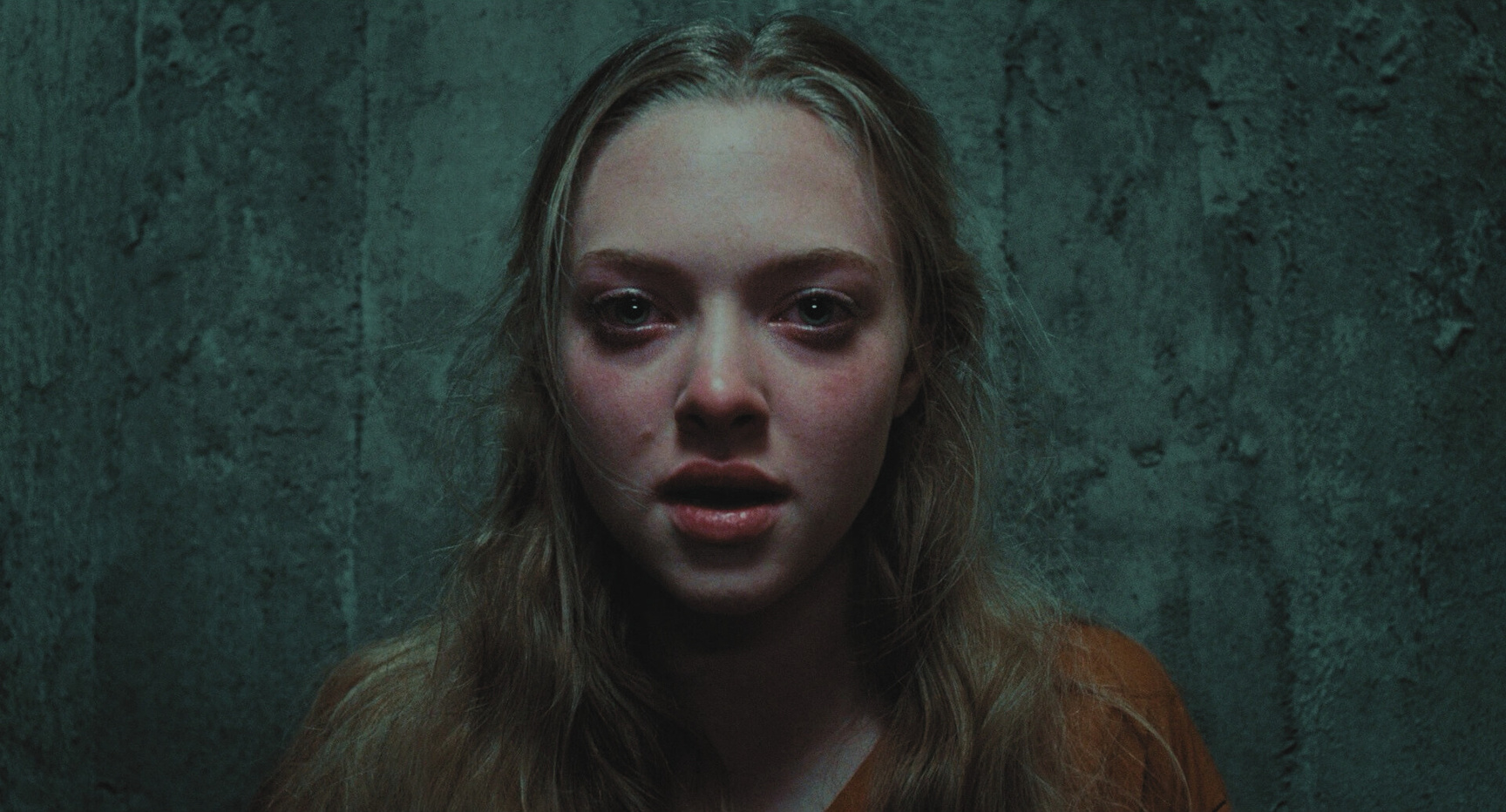
Jennifer’s Body (2009)
Running Time:
Rating:
Content Warning:
Genre:
HORROR Sub Genre:
Writer:
Director:
1h 42m
R
Sexuality, bloody violence, language and brief drug use
Horror Comedy
Paranormal - Demon - Teen
Diablo Cody
Karyn Kusama
Jennifer Check: “PMS isn't real Needy, it was invented by the boy-run media to make us seem like we're crazy.”
Jennifer’s Body (2009)
DIRECTOR: Karyn Kusama
Ahead of its time in the subversion from the male gaze and its portrayal of complex female relationships, Karyn Kusama’s Jennifer’s Body (Kusama, 2009) was initially overlooked as a feminist horror comedy. The film follows Needy (Amanda Seyfried) whose best friend Jennifer Check (Megan Fox) has been possessed by a demonic entity after an encounter with a predatory older male. What follows is a bloodbath and a clever subversion of classic horror tropes and dark comedy. Director Karyn Kusama and writer Diablo Cody have managed to effectively empower their female protagonist while offering a unique perspective on the tribulations of adolescence and the dangers of sexual violence. With witty dialogue such as ‘No. I mean she’s actually evil, not high school evil,’ and an exploration of female desire and identity, this film is a perfect addition to the She Screams collection.
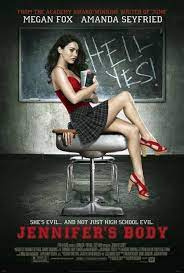
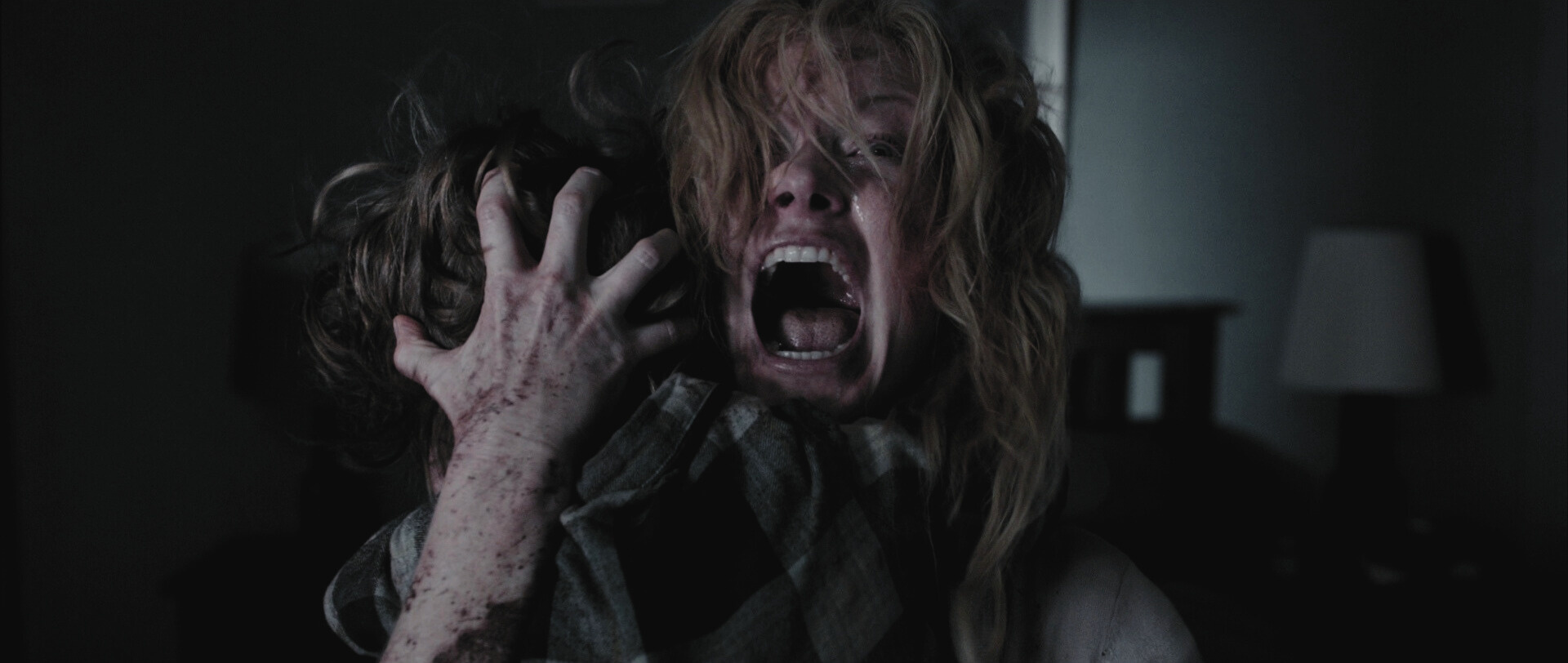
the babadook (2014)
Running Time:
Rating:
Content Warning:
Genre:
HORROR Sub Genre:
Writer:
Director:
1h 34m
M
Violence & Gore, Profanity, Frightening & Intense Scenes
Horror
Paranormal - Monster Psychological - Possession
Jennifer Kent
Jennifer Kent
AMELIA: “You are nothing. You're nothing! This is my house! You are trespassing in my house! If you touch my son again, I'll f**king kill you!”

the babadook (2014)
DIRECTOR: Jennifer Kent
Jennifer Kent’s directorial debut The Babadook (2014) has gained international recognition for its originality and unique representation of motherhood within the horror genre. The film follows grieving mother Amelia (Essie Davis) as she struggles to raise her imaginative and troubled young son Samuel (Noah Wiseman). Upon the introduction of a mysterious storybook and its titular character, the Babadook, Amelia becomes consumed by a supernatural entity intent on getting rid of Samuel. Haunting sound design, shadowplay and unsettingly camera angles effectively immerse audiences in the psychological unravelling of Amelia. This incredibly honest and confronting portrayal of motherhood and exploration of women’s mental health within a domestic setting is a successful subversion of the monstrous mother trope typically associated with the horror genre.
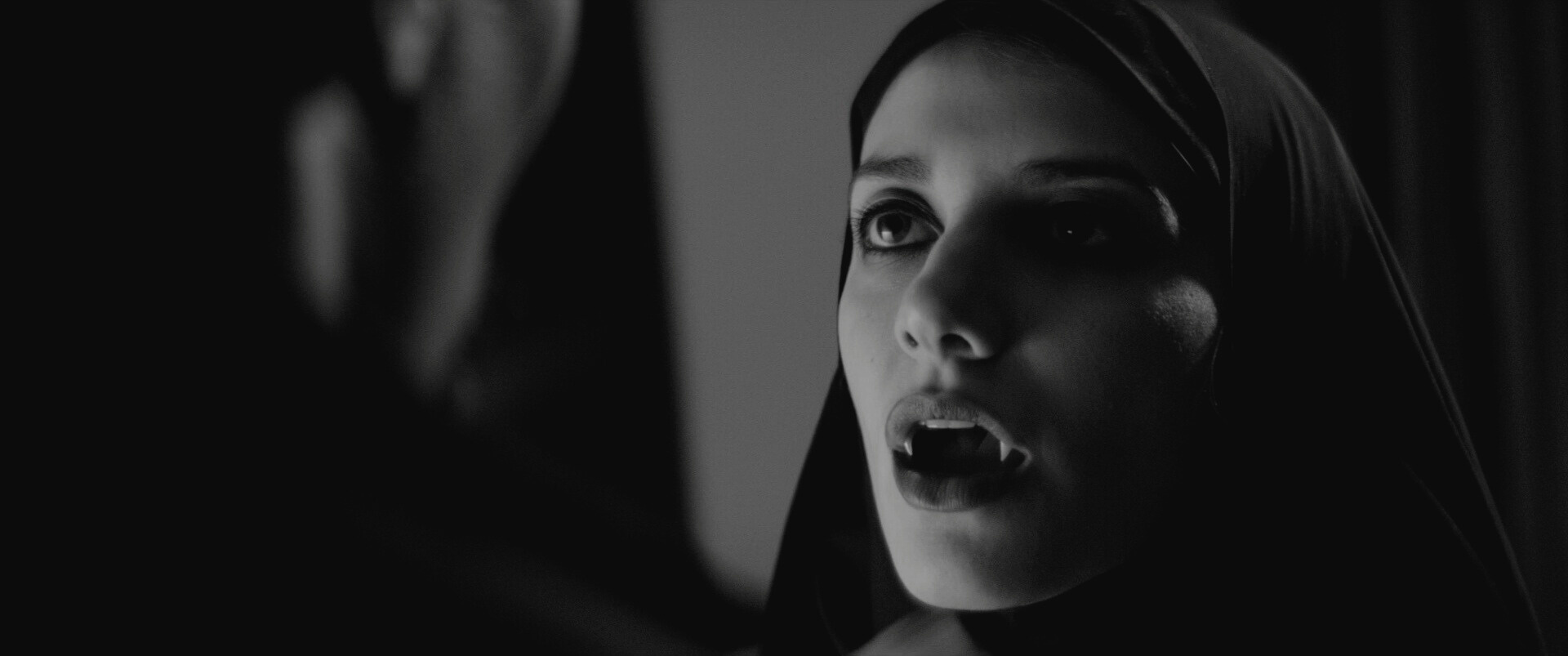
a girl walks home alone at night (2014)
DIRECTOR: Ana Lily Amirpour
A Girl Walks Home Alone at Night (2014) is the feature length debut for writer/director Ana Lily Amirpour who describes it as “the first Iranian Vampire Western ever made.” The film follows lonely vampire ‘The Girl’ (Sheila Vand) as she stalks and kills the bad men of her small town. Hailed for its successful and original blend of spaghetti westerns, neo-noir and a subversion of the monster horror sub-genre, Amirpour defies traditional horror conventions. Stark black-and-white cinematography and deliberate framing are used to empower the female lead as she stalks her prey. Skateboarding, chador wearing and record playing ‘the Girl’ is a refreshing and compelling female protagonist who defies stereotypes and denies the female objectification historically associated with the genre.
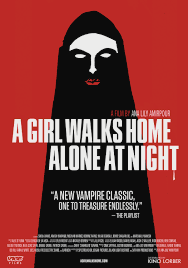

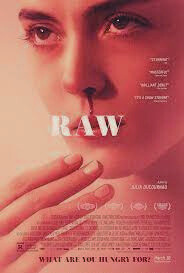
raw (2016)
DIRECTOR: Julie Ducournau
French Film writer and director Julia Ducournau’s debut film Raw (2016) has gained international recognition for its dark portrayal of adolescent reality and the associated trauma of puberty and sexual identity. Vegetarian Justine (Garance Marillier) is in her first year of veterinary school when she gets her first taste of raw meat in a series of confronting hazing rituals. What follows is a terrifying and thoughtful reflection on primal hunger and a subversion of cannibal horror genre tropes. It is a visceral representation of female empowerment and challenges traditional gender expectations. Evocative sound design and unsettling visuals immerse the audience in the addictive hunger Justine faces. The complexity of themes explored and their connection to female adolescence are paired successfully with elements of body horror that ensure its place in the She Screams programme.
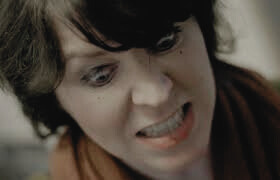
PREVENGE (2016)
DIRECTOR: Alice Lowe
Writer, director, and lead actor Alice Lowe’s Prevenge (2016) is a darkly humorous take on motherhood and possession within the horror genre. Grieving the loss of her partner, from a climbing accident, heavily pregnant Ruth embarks on a revenge killing spree at the urging of her unborn child. Developed from Lowe’s own difficulties securing acting work while pregnant the films conception is representative of female empowerment and agency. Intimate close-ups and the humorous tone assist to subverts stereotypes surrounding motherhood and the dysfunctional or monstrous mother trope. Providing an entirely unique perspective of pregnancy within the horror genre Prevenge (Lowe, 2016) explores female-centric themes and shows the potential for female directors to reshape horror narratives authentically by embedding their own experiences.
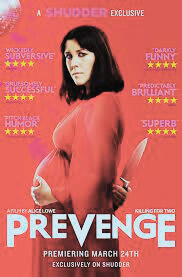

REVENGE (2017)
Running Time:
Rating:
Content Warning:
Genre:
HORROR Sub Genre:
Writer:
Director:
1h 48m
R
Strong bloody gruesome violence, a rape, sexuality, graphic nudity, drug use and language
Horror, Action, Drama
Rape-Revenge
Coralie Fargeat
Coralie Fargeat
RICHARD:: “Women always have to put up a fucking fight.”

REVENGE (2017)
DIRECTOR: Coralie Fargeat
French film director and writer Coralie Fargeat’s Revenge (2017) is a rape-revenge horror with a feminist lens. Empowered female protagonist Jen (Matilda Lutz) is left for dead after being violently and sexually assaulted by her married partner’s associates. What follows is a brutal and graphic tale of female retribution against her attackers. Fargeat depicts the true horrors of rape and the victim’s trauma while subverting the need to objectify women as traditionally and problematically associated with this horror sub-genre. The bloodshed and feminine rage empower Jen while still delivering a level of anguish to ensure audience empathy. The transition from framing that objectifies to that which empowers paired with the final image of Jen covered in dirt and the blood of her victims further highlights the power of a female director to subvert expectations.
SELECTION SUMMARY
This concludes the collection of 21st century female directed horror films for the She Screams programme. The potential for female directors to subvert and authenticate female-centric themes within the horror genre through their own experiences is evidently showcased. The films presented defy traditional gender representation, challenge female stereotypes, and empower female protagonists to ensure they are no longer simply objects for male dominated narratives. This programme highlights the diversity of the horror genre and its ability to address cultural and social concerns of the time with thought-provoking narratives. She Screams is a celebration of compelling female voices in horror both in front and behind the camera.
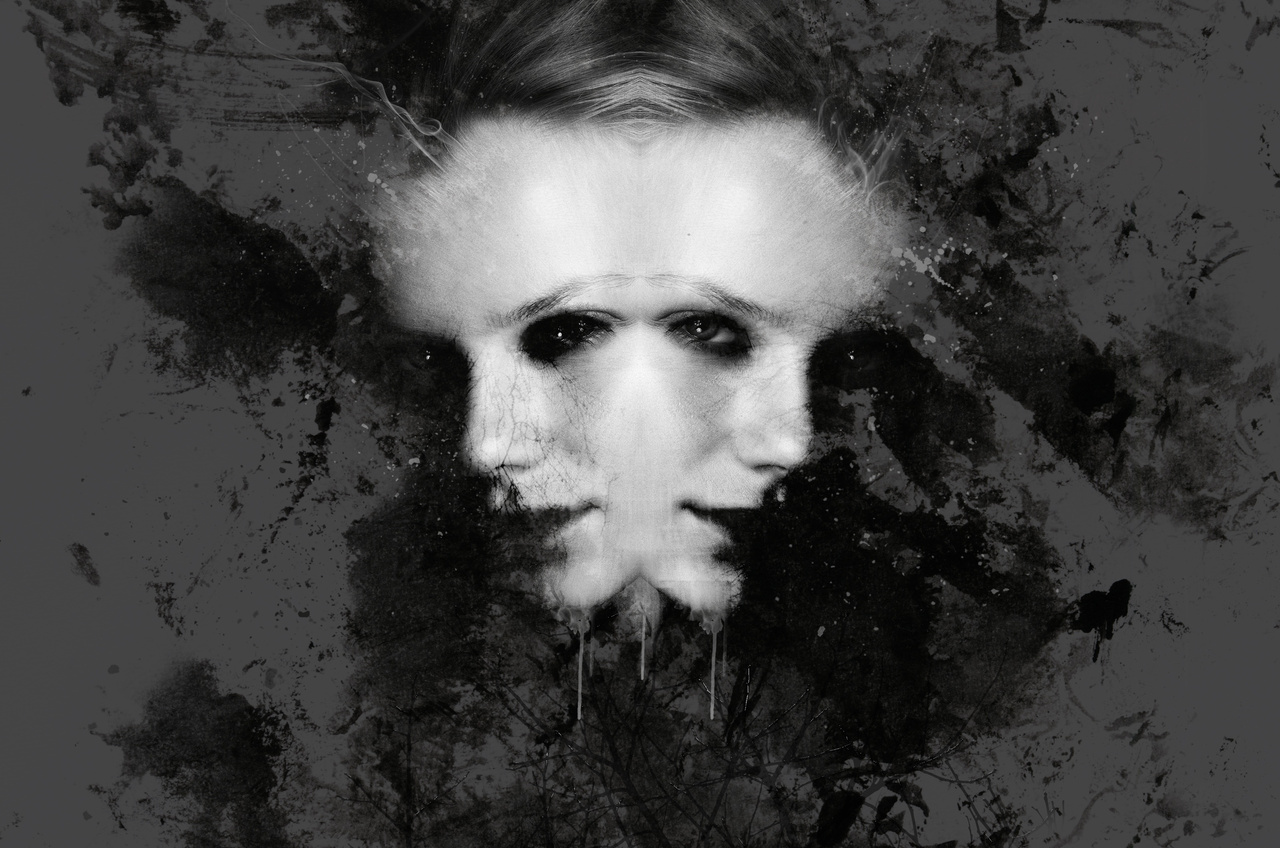
She Screams: Female Voices in 21st Century Horror is a carefully curated programme of female filmmakers recognised for their subversion of horror sub-genres and tropes. Given the feminist lens with which they have been analysed through this exhibition caters to both horror film enthusiasts and feminist scholars familiar with the genre. The initial content warning addresses potentially triggering concepts such as cannibalism, self-mutilation, extreme violence, and rape. Mention is also made of the R ratings awarded to Revenge (Fargeat, 2017), Jennifer’s Body (Kusama, 2009) and Raw (Ducournau, 2016) ensuring this programme is only suitable for an adult audience. Given the lack of female objectification these films could prove to be of interest to cinephiles and cultural critics curious and brave enough to extend their film criticism to horror cinema. Some of the selected films also reference LGBTQI+ characters and as such may be of interest to the queer community familiar with the horror genre.
The selected films cover a broad geographical spectrum and ensure the programme has international appeal particularly for those interested in global perspectives on the horror genre. Feminist film enthusiasts with experience in horror will appreciate the programmes focus on female filmmakers and their nuanced representation of female protagonists in a historically male dominated genre. She Screams presents an engaging and highly rated selection of films that redefine horror cinema through their careful consideration of women voices in horror and is a must see for those with a passion for feminist film and the horror genre.
Audience
REFERENCES
Almwaka, M. (2022). Complex Female Agency, the “Final Girl” trope, and the Subversion and Reaffirmation of Patriarchy: The Cases of Western & MENA Horror Films. Journal of International Women's Studies, 24(3), 1-5. https://vc.bridgew.edu/jiws/vol24/iss3/5
Amirpour, A. L. (Director). (2014). A Girl Walks Alone at Night [Film]. Say Ahh Productions.
Argento, D. (Director). (1977). Suspiria [Film]. Seda Spettacoli.
Aster, A. (Director). (2018). Hereditary [Film]. A24; PalmStar Media; Finch Entertainment; Windy Hill Pictures.
Aster, A. (Director). (2019). Midsommar [Film]. Square Peg; B-Reel Films; A24.
Carpenter, J. (Director). (1982). Halloween III: Season of the Witch [Film]. Dino De Laurentiis Corporation.
Carpenter, J. (Director). (1978). Halloween [Film]. Compass International Pictures; Falcon International Productions.
Carpenter, J. (Director). (1981). Halloween II [Film]. Dino De Laurentiis Corporation.
Clover, C. (1992). Men, Women and Chain Saws: Gender in the Modern Horror Film. BFI.
Creed, B. (1993). The monstrous-feminine: Film, feminism, psychoanalysis. Taylor & Francis Group.
Daniels, M. (2021). Women Make Horror: Filmmaking, Feminism, Genre, Alison Peirse (ed.) (2020). Journal of Screenwriting, 12(3), 389–391.
https://doi.org/10.1386/josc_00074_5
Ducournau, J. (Director). (2016). Raw [Film]. Petit Film.
Evernden, C. B. (2019). Mastering Fear: Women, Emotions, and Contemporary Horror. Projections: The Journal for Movies & Mind, 13(3),
121–125. https://doi.org/10:3167/proj.2019.130310
Fargeat, C. (Director). (2017). Revenge [Film]. M.E.S. Productions.
Kenny, M. (2023). Why We Need More of What Female Filmmakers Bring to Horror Movies. https://collider.com/female-filmmakers-horror/
Kent, J. (Director). (2014). The Babadook [Film]. Causeway Films.
Kusama, K. (Director). (2009). Jennifer's Body [Film]. Fox Atomic.
Lowe, A. (Director). (2016). Prevenge [Film]. Western Edge Pictures.
Mintz, S. & Roberts, R. (1993). Hollywood's America: United States history through its films. Brandywine Press.
Mulvey, L. (1975). Visual pleasures and narrative cinema. In B. Nichols (Eds.), Movies and Methods: An Anthology.
University of California Press.
O’Brien, G. (2019). Surviving Nightmares: WOMEN IN HORROR. Screen Education, 93, 62–69.
https://issuu.com/atompublications/docs/o_brien_women_in_horror
Reijn, H. (Director). (2022). Bodies, Bodies, Bodies [Film]. 2AM.
Schubart, R. (2018). Mastering fear: Women, emotions, and contemporary horror. Bloomsbury Academic & Professional.
Shim, I. (Director). (2022). Umma [Film]. Stage 6 Films; Raimi Productions; Starlight Media.
The Numbers. (2022). Box Office Performance for Horror Movies in 2022. https://www.the-numbers.com/market/2022/genre/Horror
Thompson, J. (Director). (2022). The Invitation [Film]. Screen Gems; Mid Atlantic Films; TSG Entertainment II.
